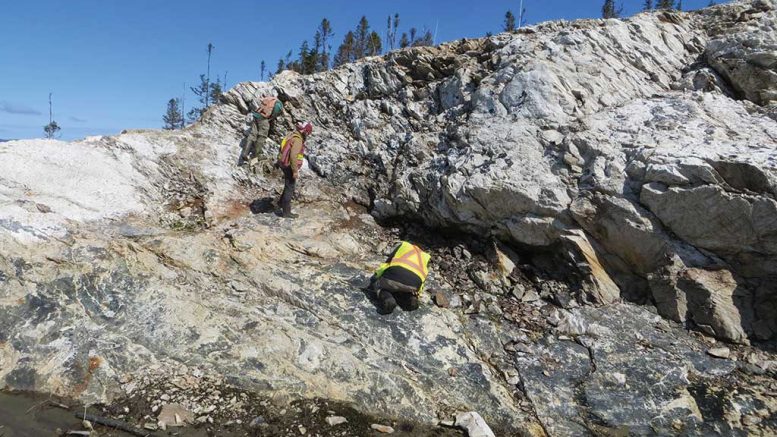Marathon Gold (TSX: MOZ) has released the results of a prefeasibility study on its Valentine gold project in Newfoundland, which envisions a 12-year open pit mine, producing an average of 175,000 oz. gold annually in the first nine years of operation.
With an initial capital cost of $272 million and average life-of-mine, all-in sustaining costs (AISCs) of US$739 per oz., the after-tax net present value estimate for the project, at a 5% discount rate, came in at $472 million, with a 36% internal rate of return.
The study suggests a mill capacity of 6,800 tonnes per day in the first three years of operation, with gravity concentration and cyanidation, expanding to 11,000 tonnes per day in the fourth year with the addition of a flotation circuit. With an estimated incremental capital cost of $42 million, Marathon expects operating cash flows to finance this expansion.
“The Valentine prefeasibility study released today presents a high-value, low capex project with a strong gold production profile and high operating margins,” Matt Manson, the company’s president and CEO, said in a news release. “We have taken the approach of identifying the optimum starting point for mining at Valentine, emphasizing highest rate of return and lowest risk, while recognizing that the large resource inventory and extensive exploration potential along strike and at depth offers plenty of opportunity for mine life extension.”
Manson added that the company’s focus will now turn towards submitting an environmental impact statement (EIS) and starting feasibility-level work. Marathon anticipates to file the EIS in the third quarter of this year and complete a feasibility study for the project in the first half of 2021. Construction is currently planned to start in January 2022 and take 18 months to complete. The company has not incorporated any potential impacts from COVID-19 into these timelines.
Alongside the results, Marathon published a reserve statement for the Marathon and Leprechaun deposits, which contain a total of 41.1 million tonnes at 1.41 grams gold per tonne in the proven and probable categories for a total of 1.87 million contained oz. gold. This reserve statement is derived from existing measured and indicated resources.
Current resources at Valentine are contained within four deposits and include 54.9 million tonnes in the measured and indicated category at 1.75 grams gold per tonne for a total of 3.1 million oz., with additional inferred resources of 16.8 million tonnes at 1.78 grams gold for a further 1 million oz. gold.
— This article first appeared in our sister publication, Canadian Mining Journal.






Be the first to comment on "Marathon Gold releases prefeasibility study on Valentine"